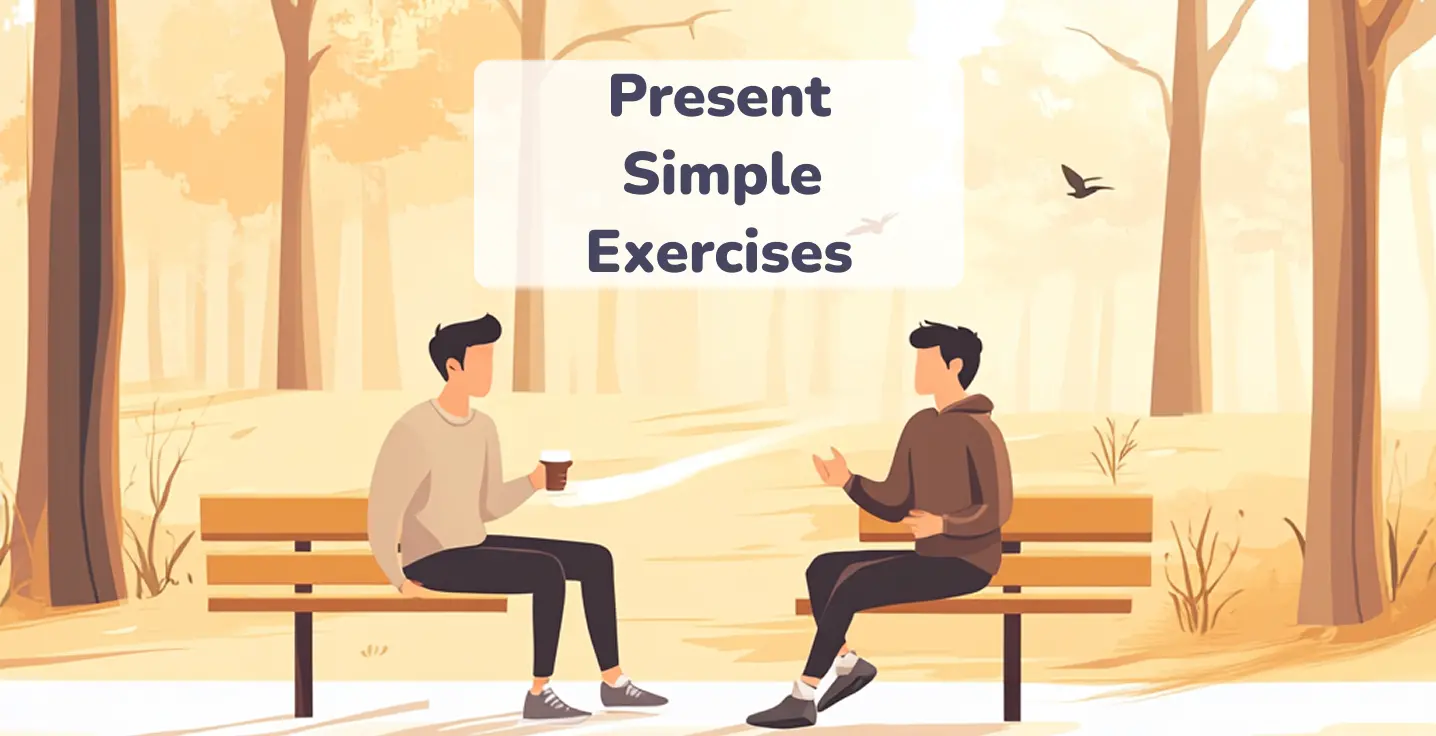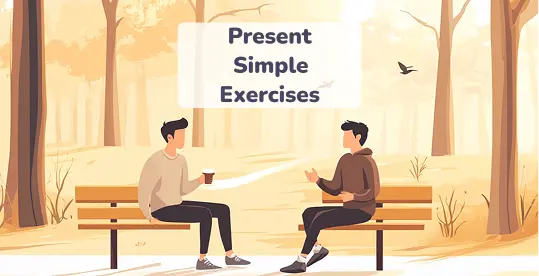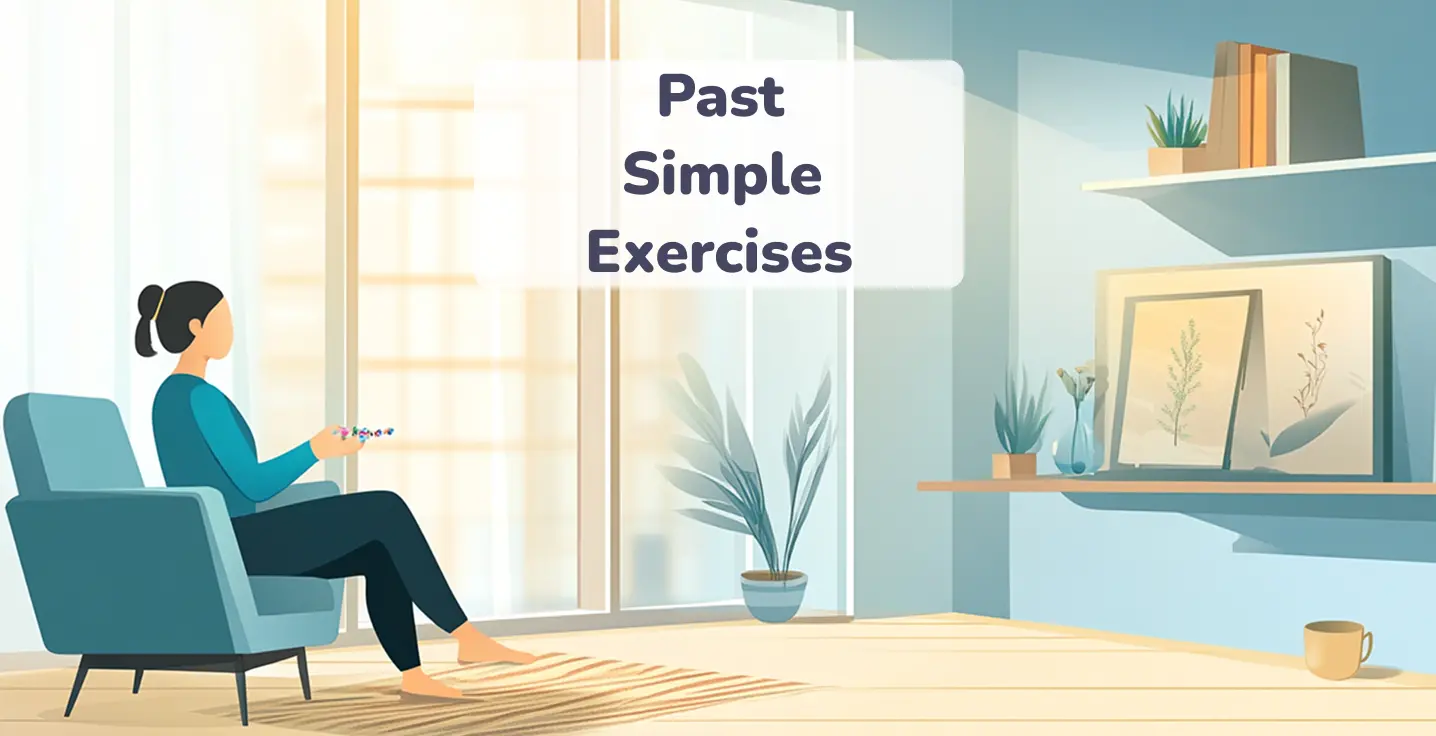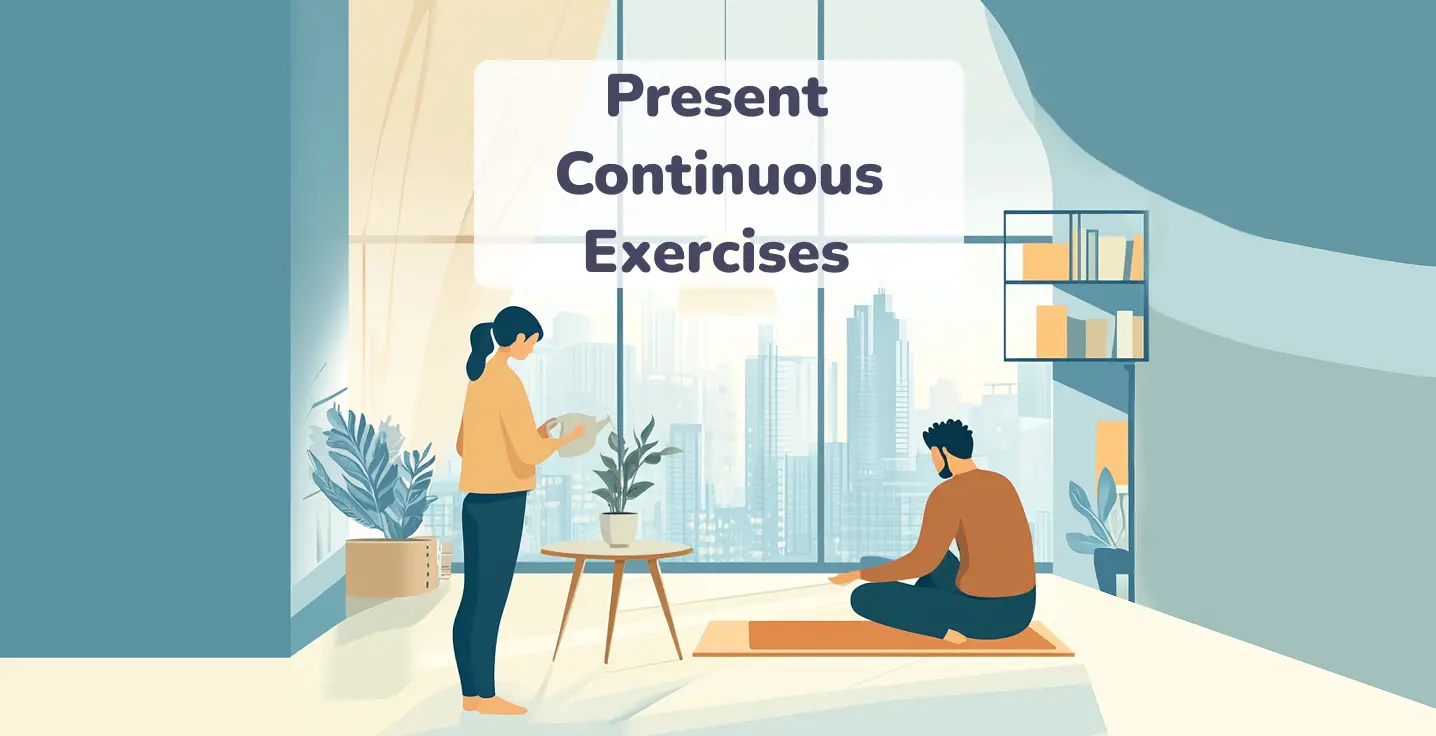Present Simple exercises
Why does regular practice with a Present Simple quiz matter?
Choosing between two options: to spend five hours without breaks once in a while or have 30-minute lessons every day, take into account that the second option proves itself more productive, because it helps to:
- Train your long-term memory. The more you engage in learning English, the easier it is to memorize structures, rules, and words. Doing a Simple Present worksheet for 5-10 minutes daily will be a helpful habit, showing its effectiveness in the long run.
- Boost intuitivity. By regularly practicing English grammar with our exercises for the Present Simple, you will learn all the patterns and be able to form sentences without second-guessing. It won’t be difficult to describe your daily routine or discuss preferences.
- Reduces mistakes. Multiple repetition is the key to mastering the Present Simple Tense. Having done various Present Simple negative exercises, questions, and statements, you will develop the ability to recognize errors when something looks or sounds wrong.
How to prepare for a Present Simple test?
This activity can be confusing for new learners. That’s why KotoEnglish gives you some advice you can find useful to make the test a piece of cake.
-
Repeat the grammar rules
You need to remember that Simple Present exercises will check how well you know the grammar structure for different sentences: questions, positive, and negative. Here, you also need to memorize that this tense helps you to tell about some general facts.
-
Make some easy practice
By using gamified apps or websites, you can improve your skills in English tenses. These activities are simple and bite-sized, so you will spend up to 5 minutes and receive large benefits.
-
Review mistakes
When completing mini tests, you may have some issues with the answers. Learn why you made a mistake, and practice a little more to be sure this tricky exercise will not get you again.
-
Create a plan
If you know the test date, it is easier to divide the material you need to learn into groups. Exercises for the Simple Present typically have several sections: True/False, multiple choice, and filling in the blanks, so you need to pay attention to each of them.
Follow these tips and stay calm, so that you will see that this task is simple for you as you prepared well. Let’s move to the next part that also helps you be ready for your test.
Top mistakes learners make in the daily Present Simple activities
In addition to understanding the challenges of the tense usage related to sentence-building activities, take note of the consistent way of studying the Present Simple. Below, we feature approaches that slow down the progress of mastering the tense:
Mistake № 1: Irregular practice
|
Spending one hour a week doing activities
|
Having a short 10-minute practice session every day
|
Mistake № 2: Ignoring the context
|
Doing only tests, focusing entirely on the structure
|
Working on the Present Simple worksheet with real-life examples
|
Mistake № 3: Focusing on one aspect
|
Solving drills with statements only
|
Paying equal attention to questions, positive, and negative sentences
|
Mistake № 4: Limiting yourself to one type of task
|
Completing just true-or-false Present Simple questions exercises
|
Pass a comprehensive Present Simple test that includes all categories of practice
|
A well-rounded approach to learning the Present Simple helps reinforce grammar patterns and builds real-world fluency over time.
Final thoughts: make Present Simple practice part of your routine
You’ve completed all the exercises, have you? Then it is time to learn more about the other tenses, such as Present Continuous or Past Simple, to be able to talk about what is happening right now or discuss events from the past. You can also practice the other skills, like speaking and writing Present Simple tense exercises.







